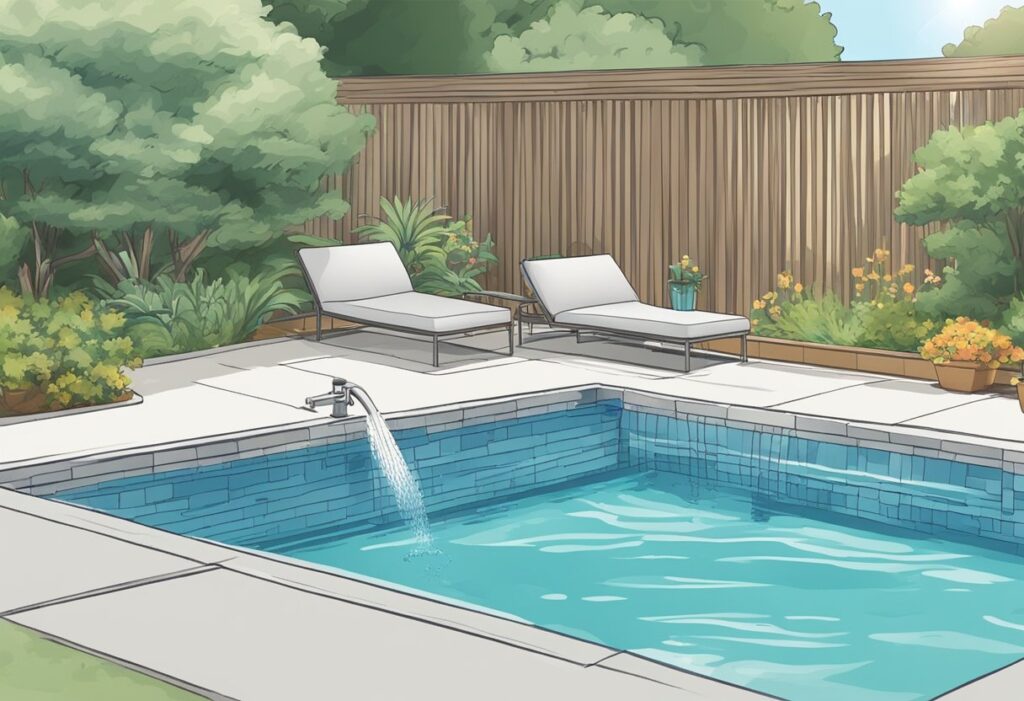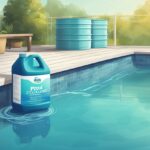Acid washing a swimming pool is a powerful cleaning method that strips away stained and discoloured layers to reveal a fresher, cleaner surface. This procedure typically involves draining the pool and then applying a diluted acid solution to the interior surfaces. Whether your pool’s appearance has been compromised due to algae infestations or chemical imbalances, an acid wash can be a solution to restoring its aesthetic appeal. However, it’s a task that necessitates careful preparation, proper protective gear, and an adherence to safety protocols to prevent harm to yourself, the environment, and the pool structure.

Your pool may need an acid wash if you notice stubborn stains or if it has not been cleaned for a long period. Acid washing becomes a crucial maintenance step to rejuvenate its appearance and ensure that the surface is clean for the subsequent refilling and chemical treatment. It’s important to note that acid washing is not a routine maintenance procedure—it should be done occasionally, as the process can gradually thin out the plaster or whatever surface material your pool has. Therefore, the decision to acid wash should be taken with consideration of the pool’s age and condition.
Before commencing with this job, make sure your pool can be safely drained and that you understand how to handle muriatic acid, which is commonly used. Since muriatic acid can have harmful effects on local ecosystems, it’s critical to follow the correct procedures for neutralising the waste before disposal. Gathering the right tools and protective equipment is a must, including a pool brush, submersible pump, protective clothing, and eye protection to ensure a safe and successful acid wash. Remember, when in doubt, seek out the advice or services of a professional to carry out the task.
Preparing for Acid Washing
Acid washing your swimming pool is an intensive cleaning process, typically performed to remove stubborn stains and build-up on plaster surfaces. Before you begin this effective method to restore your pool’s appearance, proper preparation is critical to ensure safety and efficacy.
Safety Precautions
Your safety is paramount when handling an acid mixture. You need to don protective gear, including goggles, a respirator mask, rubber gloves, and appropriate clothing to protect your skin from acid splashes. Always work in a well-ventilated area to avoid inhalation of fumes, and have a disposal plan in place for the used acid solution.
Draining the Pool
To acid wash your pool, it must be completely drained. Use a submersible pump to remove the water efficiently. Ensure the drain and clean procedure complies with local regulations regarding water disposal. Once the pool is empty, inspect the plaster for any areas that may need special attention during the acid wash.
Cleaning and Removing Debris
Before applying the acid mixture, clean your pool thoroughly to remove loose debris. Use a garden hose to rinse the surfaces, and sweep or vacuum to collect any remaining dirt. This initial cleaning helps to ensure that the acid wash is as effective as possible in targeting stains rather than surface dirt.
Applying the Acid Wash
Before you begin the acid washing process, it’s critical to take proper safety precautions, use the correct ratios for the acid solution, and work systematically to ensure the pool walls are thoroughly cleaned without causing damage.
Mixing the Acid Solution
To prepare the acid solution, you’ll need to dilute muriatic acid with water. Always add muriatic acid to water, never the reverse, to prevent dangerous chemical reactions. A common dilution ratio is 1 part acid to 10 parts water. Pour the water into a plastic container, then slowly add the acid. Stir carefully with a plastic or wooden stirrer.
Acid Washing the Pool Walls
Begin at the shallow end of the pool. Wet the pool surfaces thoroughly with a hose to ensure that the acid wash adheres properly. Apply the diluted acid solution evenly in a circular pattern using a plastic watering can or bucket. Then, use a pool brush to scrub away algae, stains, and calcium buildup. It’s essential to avoid leaving the acid on the concrete or gunite surface for more than 30 seconds to prevent etching.
Rinsing and Neutralising Residue
After scrubbing, rinse the pool walls immediately with water to remove the acid solution and any loose debris. To neutralise the acidic wastewater, sprinkle soda ash onto any puddles of acid before disposal. This step is important to bring the pH level back to neutral, protecting the environment and any aquatic life nearby. Dispose of the neutralised water according to your local regulations.
Post-Acid Washing Procedures
After conducting an acid wash, it is vital to follow through with the correct post-cleaning practices to ensure your pool’s longevity and safe use. These next steps will assist you in inspecting the pool for any necessary repairs, refilling the pool, and getting the pool system back up and running effectively.
Inspecting and Repairing the Surface
Once the acid wash is complete and the surface is thoroughly rinsed, you must inspect the pool’s surface for any damage or areas that need repair. Look for signs of wear in the concrete or vinyl liner that could have been exacerbated by the acid wash. Repairs may range from patching a vinyl liner to addressing cracks in concrete pools. Ensure repairs are carried out with materials suitable for swimming pools, such as underwater sealant for a concrete pool or a vinyl liner repair kit.
Refilling the Pool
Before refilling your inground or above ground pool, verify that autofill devices are turned off to prevent unattended water flow. Start by using a garden hose or connecting a suitable waste hose to your water supply. Fill the pool gradually, keeping an eye on the water level to avoid overfilling. During this process, be sure to prevent any runoff that might harm surrounding plants or areas.
Restarting the Pool System
Once the pool is refilled, you need to restart the pool system. This entails priming the pump and checking all settings on your pool’s filtration system. Wait for the pool to reach the appropriate water level before turning on your pump to prevent any damage to the pump motor. When the system is active, carefully add the necessary chemicals to rebalance your pool water. It is advisable to wear chemical-resistant gloves and safety goggles during this procedure to protect yourself from any chemical splashes or hazards.











